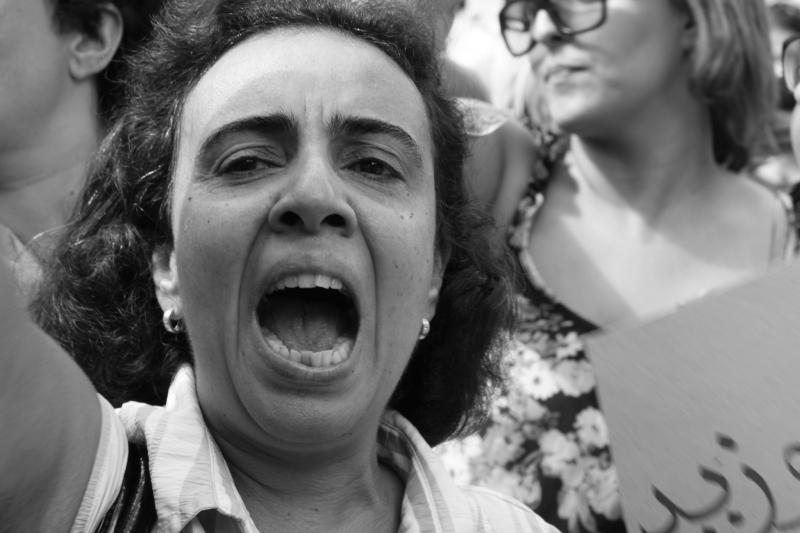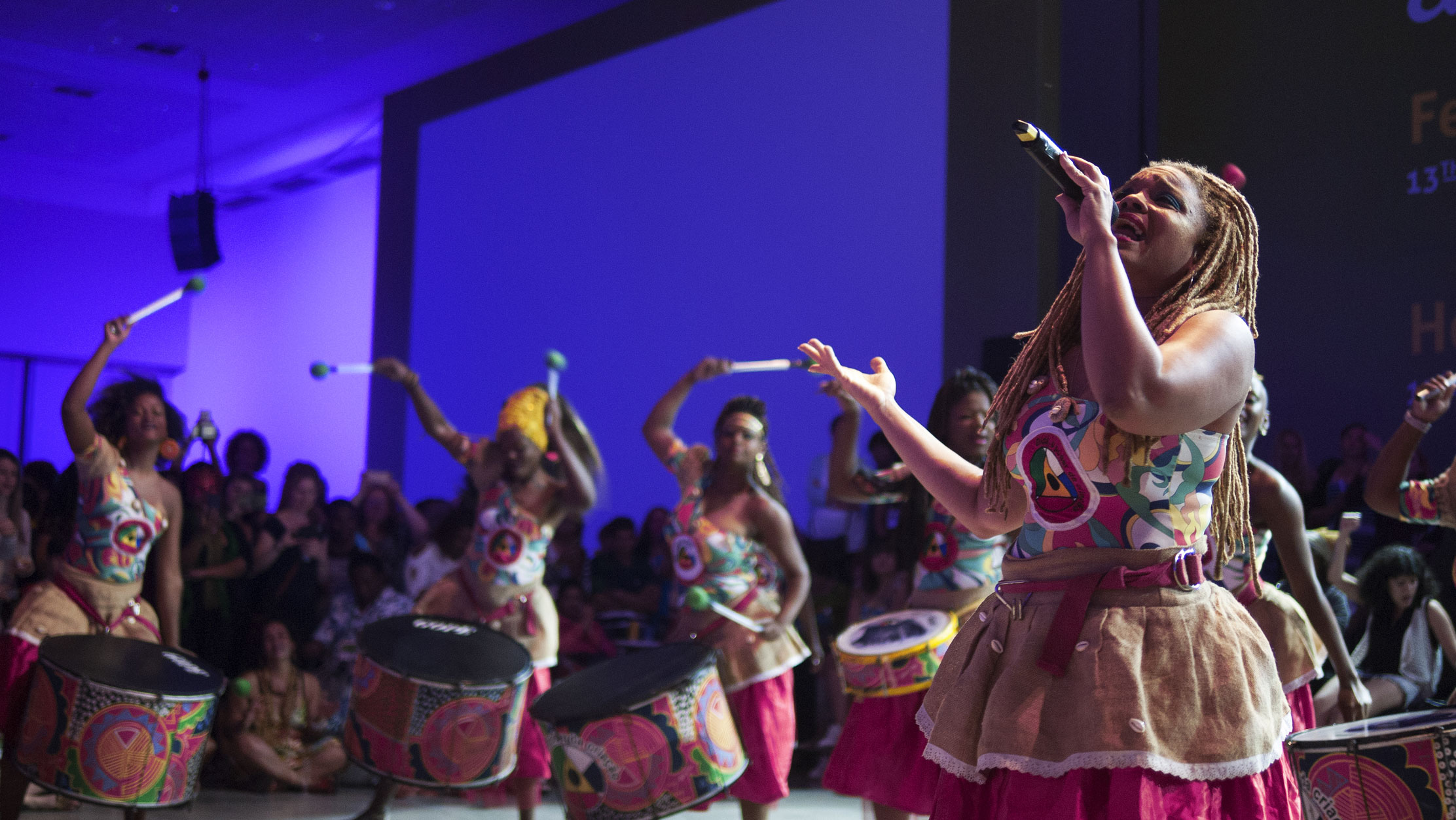FRIDAY FILE - In this latest interview forming part of AWID’s commemoration of the 20th anniversary of the 1993 World Conference on Human Rights in Vienna, AWID speaks to Mahnaz Afkhami, Director of Women’s Learning Partnership about some of the advances and challenges for women’s rights and women’s rights organizing in the Middle East and North Africa (MENA) region over the last 20 years
By Susan Tolmay
AWID: How far do you think we have come in the last 20 years in realizing universal human rights for women? What are some of the success stories for women in the MENA region from the past two decades?
Mahnaz Afkhami (MA): One of the most important achievements of the World Conference on Human Rights (Vienna Conference) was the formal global agreement that women's rights are human rights and that universal human rights supersede cultural values that might come into conflict with such rights.
Global gatherings such as the Vienna Conference, when successful, lead to paradigm change, which opens the way for other actions. The Vienna Conference made possible the creation of the United Nations High Commission on Human Rights, which then created the position of UN Rapporteur on Violence Against Women. The Conference helped refocus the mission of the UN around the centrality of human rights. The Declaration on the Elimination of Violence Against Women adopted by the General Assembly two years after Vienna became a model and an inducement for national parliaments to legislate appropriate laws. The Conference support for Independent National Human Rights organizations helped them grow in number from 35 to 100.
The greatest achievement of the Conference was the consensus on the universal applicability of human rights. The institutions and instruments that grew out of the Vienna Conference have provided women with strong national and international vehicles to mobilize, organize, and advocate for rights, however, an enormous amount of work remains to be done to secure and ensure women's human rights.

In the MENA region, such global ideas as the universality of human rights have greatly contributed to the expansion of women’s consciousness, especially the understanding that rights are integral to our self- definition as women and as human beings: That rights are inherent in our humanity, not in our membership in religion, race, culture or nationality. This consciousness provides the foundation around which solidarity and movement building takes place. It has come about through the work of courageous activists who face grave challenges, and through the expanding connectedness of the people of these countries--70% of whom are below the age of thirty and who are increasingly adept at using modern information and communication technologies (ICTs) to connect to their peers across the world.
Movement building in the MENA has led to successful campaigns in several fields opening doors to future possibilities. An interesting and heartwarming example of sharing concepts and strategies across borders is the Moroccan family law. Decades of struggle made possible Morocco's landmark 2004 family code, which is a beacon for Muslim women's rights. It raised the age of marriage and gave wives joint responsibility and control with husbands in such family matters as property upon divorce. It also criminalized sexual harassment. These lobbying and advocacy processes were documented, translated and shared internationally. In 2006, using similar strategies, Iranian women’s rights activists began their extraordinary One Million Signatures Campaign for the Reform of Family Laws, a model of door to door campaigning, social networking, and communicating that mobilized an astonishing 30% share of signatures by men. This networking and movement building was one of the main forces behind the 2009 Green Movement in Iran that although suppressed, remains an experience that will continue to impact the process of democracy development in Iran.
There are other examples of important successes in other countries--many of which relate to the citizenship campaign spearheaded by Lebanon--which expands the advocacy for women’s nationality rights by linking it to the rights and responsibilities of the individual citizen, male or female, vis-à-vis the state. This provides a good frame for the debate about rights, which will bring in women’s role in movements for democracy and the significance of their partnership with men in achieving equality and rights for all.
AWID: Despite the Vienna Declaration and Programme of Action (VDPA) and the many other declarations, conventions and instruments, violations of women’s human rights continue, often with impunity. What are some of the new or increasing violations of women’s human rights across the globe, particularly women's cultural rights in the MENA region?
MA: The challenge to women’s human rights is twofold. One relates to the general concept of relativity of rights—an ideological position negated at the Vienna Conference and at all subsequent UN conferences on women. Relativity of rights in the MENA region is espoused by fundamentalists who claim that certain rights are in conflict with Islam, and therefore not applicable in Muslim majority countries. This position is promoted by some feminists in the West on the grounds of choice and diversity, notwithstanding our mutual experience across the world and throughout the centuries that the fundamentalist position in support of relativity contravenes both choice and diversity. Some argue that there is no conflict between Islam and feminism that proper interpretation of religious texts will not solve. Unfortunately, once the concept of equality between the sexes becomes subject to interpretation of any religious texts, women are the losers. For Muslim women to be able to practice their faith and rights freely there must be a separation between religion and governance, otherwise the group who has majority will dictate lifestyle and values to all others.
Another challenge is the global conservative backlash against women, which threatens to take us back years. Women activists, for example, have had to forgo a Fifth World Conference on Women for fear that commitments to full rights for women, agreed to by the international community almost two decades ago may be weakened or even reversed. This backlash has been particularly pronounced in the MENA region in recent years. Women were at the forefront of the movements that culminated in the transitions in the Arab world in 2011. They used their advocacy skills and social media outlets to communicate their grievances, demands, and vision for the future. They did much that was open and visible during demonstrations, and more behind the scenes such as providing urgent aid and assistance to victims of violence and cleaning up after the throngs of demonstrators. However, once victory was achieved, the well-organized and richly resourced Islamists won the seats of power. Like their role models, the Iranian Ayatollahs, their first act was to disempower women by negating their hard won achievements. Quotas were nullified and women have been kept out of high- level decision-making. The Shari’a[i] was declared the sole foundation of the laws on the status of women. Laws that had taken women decades to bring about, such as women’s right to divorce and the banning of female genital mutilation, have been attributed to the West or called “first ladies laws,” thereby taking away self-determination, pride and power from the women activists who were the authentic change makers.
AWID: What role have women’s movements played in advancing some of the issues you describe above?
MA: Women’s movements have been most instrumental in knowledge sharing and skills building with young men and women in promoting rights and democracy. Because women have been the most disadvantaged in terms of rights, but at the same time have had connections with regional and global networks, they are to some extent ahead in terms of understanding of the rights-based advocacy strategies. Women have used sophisticated methods of social networking which, with the expansion of mobile devices, has become accessible to the grassroots. MENA women also think of women not only as individuals, but as individuals within families and communities. While these ties have had the negative consequence of too much interference with their choices, they have also become increasingly savvy in using networks and connections that are not exclusively female.
AWID: As the MDGs come to an end in 2015 and a new development agenda is negotiated, what do you see as some of the opportunities and threats for advancing women’s human rights in the areas you referred to above?
MA: The most important opportunity for women’s rights is that the new agenda will provide an opportunity for us to emphasize that all aspects of sustainable development depend on women’s participation, and therefore on the allocation of priority and resources specifically to realize women’s full and equal participation. The threat lies in singling out one measure among many and reducing women’s aspiration to that. In the MDGs we had girls’ education and maternal mortality as focus areas, but important as these are, they cannot be the answer to a problem that requires a holistic, trans- as well as inter-sectoral approach. In thinking about the post2015 era, we must remember our old mantra that “all issues are women’s issues” as we plan.
About Vienna+20 Series:
As part of AWID’s commemoration of the 20th anniversary of the Vienna Declaration and Programme of Action (VDPA) that was adopted by representatives of 171 States at the World Conference on Human Rights in Vienna, 1993, we are producing a series of Vienna+20 written and audio interviews featuring prominent feminists who were involved in advocating for women’s human rights leading up to and following the Vienna conference.
Read the published interviews:
Vienna +20: “Women’s Rights are Human Rights” Views from Latin America and the Caribbean (LAC)
[i] Shari'a is the basis for personal status laws in most Islamic majority nations
